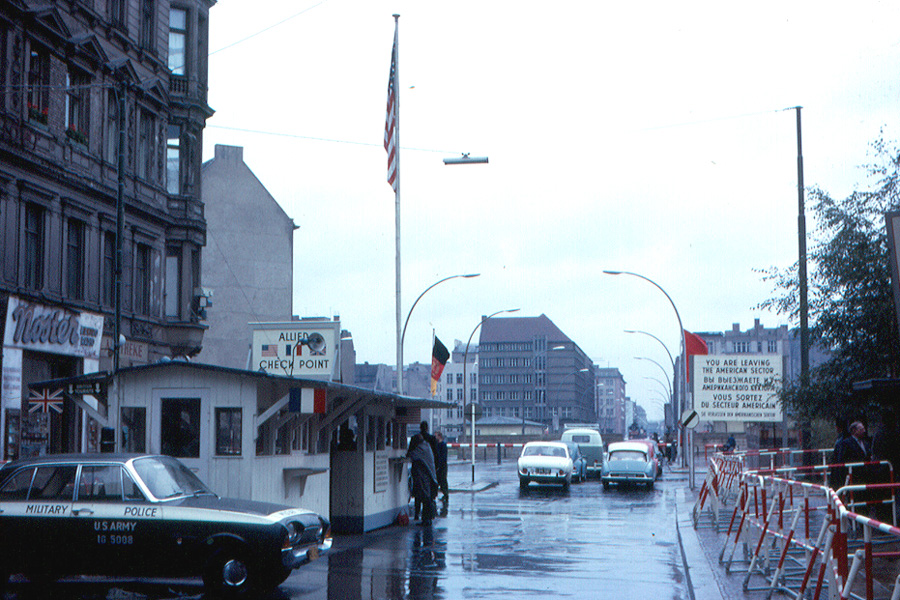Checkpoint Charlie was on Friedrichstrasse, near Kochstrasse. It was the only crossing between West Berlin and East Berlin that could be used by Americans and other foreigners, and by members of the Allied Forces. The other six checkpoints were for residents of West Berlin or West Germany. Photo: Roger Wollstadt / CC BY-SA 2.0 DEED.
Detachment A or the 39th Special Forces Operational Detachment (SFOD), was a top secret clandestine US Army Special Forces unit that operated undercover in Cold War Berlin from 1956 to 1984. The unit had about 90 highly trained and experienced Green Berets and was tasked with various missions such as unconventional warfare, stay behind, direct action, and anti-terrorist operations. The unit was never activated to directly fight the Soviet forces, but it conducted covert assignments in both West and East Berlin. It was involved in some of the most sensitive missions. The unit was technically illegal under the Four Powers Act.
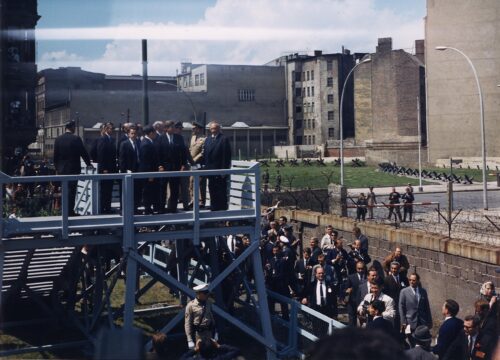
US Army Special Forces
The US Army Special Forces, also known as the Green Berets, are a special operations force that specializes in unconventional warfare, foreign internal defense, direct action, counterterrorism, and other designated missions. They were the logical choice for Detachment A.
The origin of the Special Forces dates back to the World War II Office of Strategic Services (OSS), which conducted covert operations behind enemy lines in support of resistance groups in Europe and Asia. After the war, some of the OSS veterans formed the core of the first Special Forces Group, which was activated in 1952 under the command of Colonel Aaron Bank.
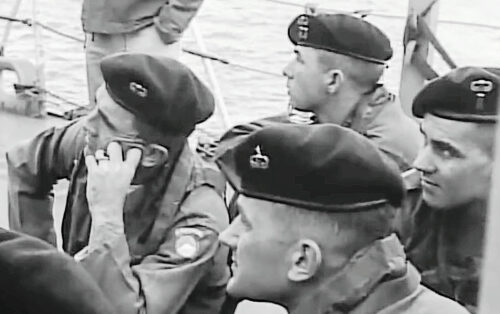
The origin of the wearing of the green beret by Special Forces can be traced back to World War II, when some American soldiers adopted the beret as a headgear to match their European allies. The beret was a common accessory among the French and Belgian troops, and the British Commandos chose the green color for their own berets. The green beret was first designated in 1953 by Special Forces Major Herbert Brucker, a veteran of the Office of Strategic Services (OSS), the precursor of the Central Intelligence Agency (CIA). He was inspired by the British Commandos and their unconventional warfare tactics. Later that year, 1st Lt. Roger Pezelle made it the unofficial headgear for his A-team, Operational Detachment FA32, and wore it during field exercises.
The green beret soon spread throughout all of Special Forces, but the Army did not authorize its official use until 1961, when President John F. Kennedy visited Fort Bragg and saw the Special Forces soldiers wearing their distinctive headgear. Kennedy was impressed by their special mission and skills and wrote a White House Memorandum stating that “The Green Beret is again becoming a symbol of excellence, a badge of courage, a mark of distinction in the fight for freedom”. After his assassination, his widow Jackie requested that the Green Berets serve as the Honor Guard during his funeral procession. Since then, the green beret has become a symbol of US Army Special Forces and their elite status.
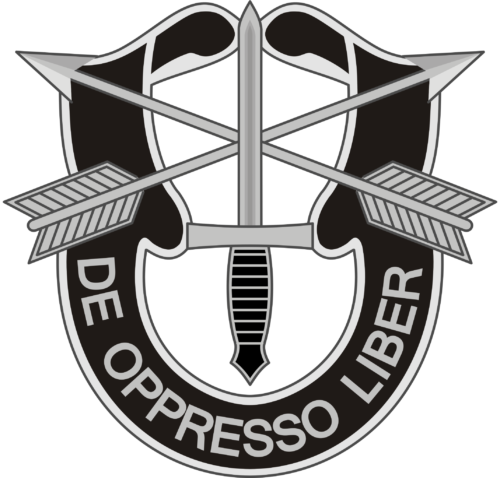
Detachment A
Detachment A was initially known as the 7781 Army Unit. Its mission was to prepare for a possible Soviet invasion of West Berlin, and to conduct sabotage, reconnaissance, and resistance activities behind enemy lines if the city was captured.
The unit consisted of six modified Operational Detachment Alpha (ODA) teams from the 10th Special Forces Group, each with six highly trained and specialized soldiers, who were disguised as civilians and worked undercover in various sectors of the city. Each team consisted of one master sergeant and five enlisted personnel. The officer in charge (OIC) was a major and his executive officer (XO) was a captain. The unit maintained a high alert status 24 hours a day. The unit was originally stationed in Bad Tölz but was relocated to Berlin in 1956 and embedded with the Headquarters and Headquarters Company (HHC), 6th Infantry Regiment.
The team members of the unit had to master the art of blending in with the locals. They learned how to smoke, drink, eat, and dress like Europeans, and some of them even spoke German and Russian fluently. They conducted highly classified covert missions across the border into East Berlin and East Germany, where they faced the constant threat of capture or death.
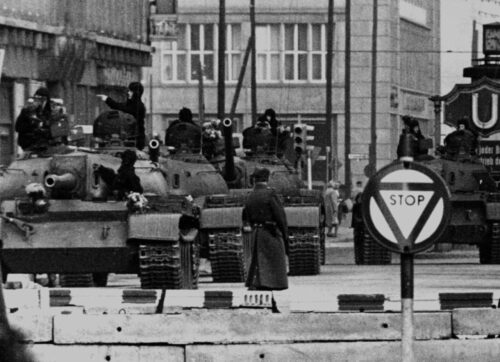
The unit operated under strict secrecy and high alert status until it was deactivated. Although never activated to fight the Soviets, the unit was prepared to fight behind enemy lines, disrupt Soviet communications and supply lines, assassinate key targets such as Soviet generals and East German leaders, and support local resistance movements.
The 7781 Army Unit was renamed Detachment “A” (DET-A) in 1958. The unit was stationed in West Berlin and was assigned to HHC, US Army Garrison, Berlin, with its new name. It became independent from the Garrison in 1962 and was designated as Detachment (A), Berlin Brigade, US Army Europe, until it was deactivated in 1984.
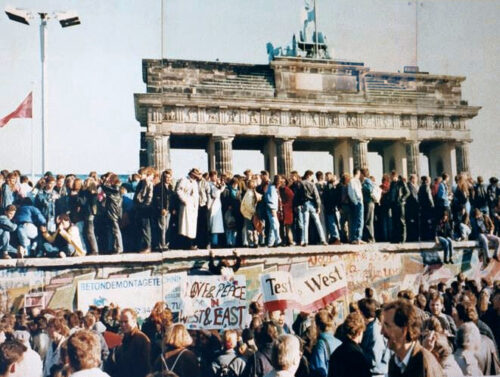
Detachment A / 39th Special Forces Berlin was one of the most secretive and elite units in the history of US special operations forces, and its existence was only declassified in 2014. A memorial stone was dedicated to honor the detachment’s service and sacrifice at the US Army Special Operations Command (USASOC) headquarters in Fort Bragg, North Carolina.
Resource
Detachment A Website
Detachment-A.org
*The views and opinions expressed on this website are solely those of the original authors and contributors. These views and opinions do not necessarily represent those of Spotter Up Magazine, the administrative staff, and/or any/all contributors to this site.

